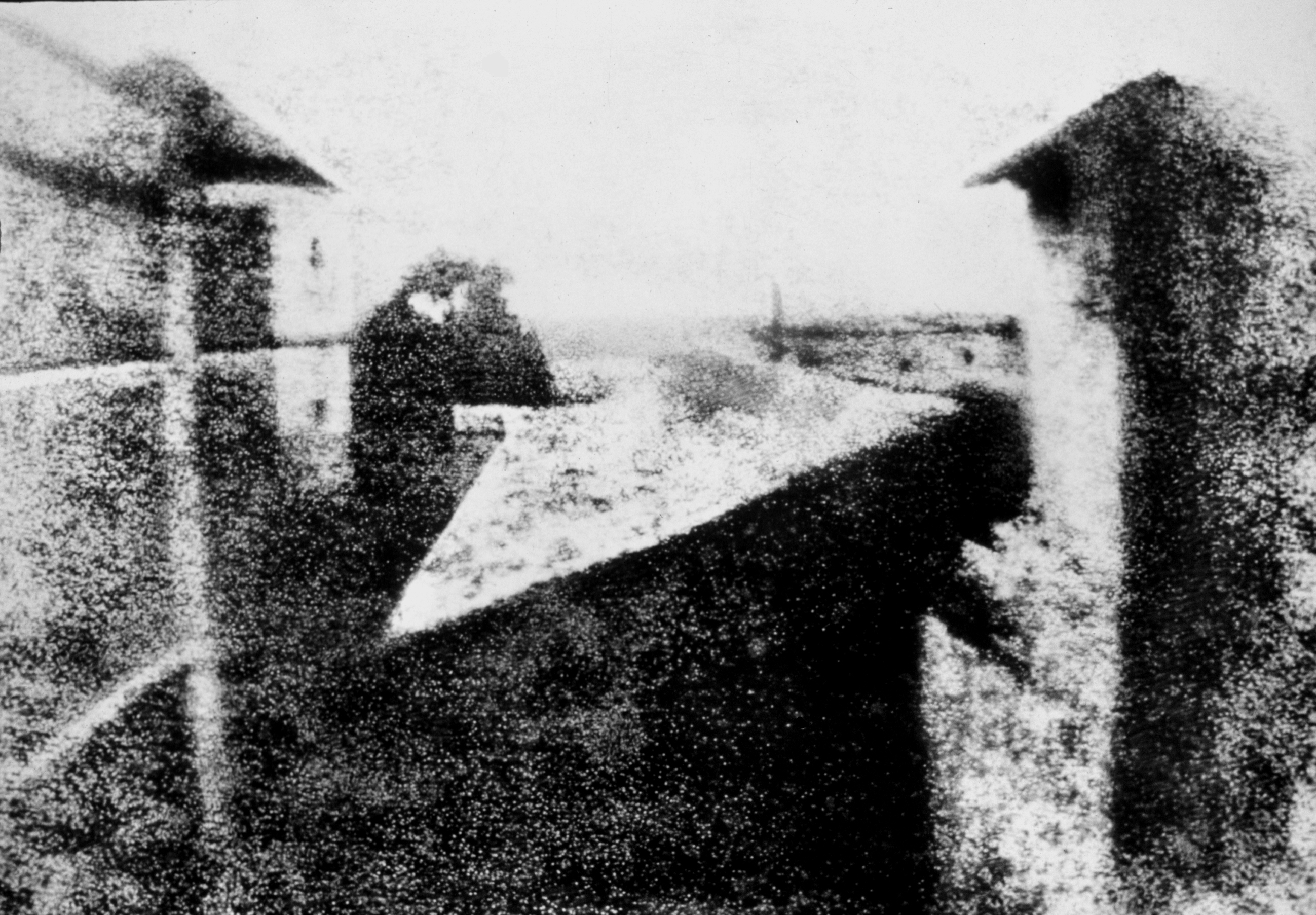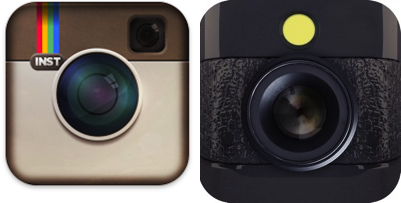Our world has survived natural disasters, world tragedies, and the end of the Mayan calendar. Pop culture inundates us with concepts of vampires, zombies and robots. Is an apocalypse truly around the corner? There’s no way of knowing for sure, and until then we will continue documenting our lives in the best way we know how – photography. The art of taking pictures has been explored for nearly two centuries, and the pictures we take have continued to develop with the growth of technology and innovation. Let’s take a look at the journey of photography, from the earliest photos to the shots we send every day.
First, let’s start with – well, the first…
- Joseph Nicephore Niepce, 1827:
This is the man who started it all – his inventor background and fascination with light-produced images led him to build a machine that captured the world’s first photograph, known as “View from the Window at Le Gras.” Unfortunately, the Royal Society of England rejected his findings because he refused to fully divulge his process, and the rise of the daguerreotype even overshadowed his accomplishments. But there’s no denying that Niepce was the father of photography as we know it.

Following in Niepce’s footsteps with light-produced images, Eastman experimented with gelatin emulsions, coatings that would allow camera plates to be exposed at the photographer’s leisure (previous emulsions would dry out too quickly). When he nailed the formula, he began to mass-manufacture the plates, and set on his way to “making the camera as convenient as the pencil.” Eastman founded Kodak (K was his favorite letter), and released a camera that contained a 100-exposure roll of film using paper negatives.
Once cameras became more accessible, the American physicist Edwin Land came onto the scene with his fascination with polarized light. His invention of the first sheet polarizers changed the landscape of photography; indeed, one of his early deals was with Kodak to produce polarized film mounts. Land’s claim to fame was his development of instant photography; according to stories, his daughter had asked him why she couldn’t see photos right away.
Early photography certainly set the foundation for the photography that we know and love today – and further developments made photography not just accessible but indispensable. Let’s get started on the second leg of our journey…
If you’ve ever wanted to take a picture of anything, you have most likely encountered a Fujifilm disposable camera. But if you had that desire in the eighties, Fuji would have preferred you called it a “single use” camera – the company introduced these cameras in order to convey to the public a commitment to recycling. Unfortunately their recycling system couldn’t keep up with the initial demands of the market, so the system was revamped in 1992. The cameras remain popular today for their low part count and simple functionality.
With disposable cameras, even those who were unsure the mechanics of photography could document important moments. But there would always be those moments when a camera just wasn’t on your person – that is, until Philippe Kahn. He was determined to capture a photo of his newborn daughter, so he tinkered with the hardware wiring of his Motorola (News  - Alert) Startac and created a built-in camera just in time for Sophie’s birth. According to him, the mobile-phone camera is the “21st-century version of a Polaroid picture” – instantaneous and readily available.
- Alert) Startac and created a built-in camera just in time for Sophie’s birth. According to him, the mobile-phone camera is the “21st-century version of a Polaroid picture” – instantaneous and readily available.
.jpg)
- Apple (News
 - Alert), 2007
- Alert), 2007
The release of the Apple iPhone brings mobile photography to an unprecedented level, increasingly replacing the practice of carrying and using digital cameras. According to research by photo sharing site Flickr, the iPhones 5, 4S and 4 account for the three most popular cameras owned by members of the Flickr community; the high quality, low maintenance style of the iPhone (News - Alert) camera phone has been an increasingly common go-to for that instantaneous documentation. Mobile phones have since followed suit, with other popular options including the Samsung (News - Alert) Galaxy and the up-and-coming Nokia Lumia.
And in the modern day and age, the rise of the camera phone has brought the rise of camera apps, turning photography from captured moments to continuous conversations. Here’s the final leg – so far – of our photography journey…
- The Photo Editing Round: Hipstamatic (2009) vs. Instagram (2010)
In appearance, Hipstamatic and Instagram are very similar – both apply filters of varying artistic-ness to smartphone photos. However, Hipstamatic makes you pick a lens or filter before taking the photo, giving the whole photography process a more analog feel; Instagram lets you filter photos you’ve already taken. What’s more, Instagram has taken off as a social setting, with 130 million users having shared 16 billion photos and accumulating one billion likes daily. Hipstamatic, though, is often seen as a “wannabe Instagram” (in spite of its seniority on the scene) because it lacks the social setting of Instagram – and unfortunately, the $1.99 price tag (News - Alert) doesn’t help its case. Instagram may be dominating the market, but both apps have their unique perks in the mobile photography world.

- The Photo Communication Round: Snapchat (2011) vs. CallSnap (2013)
Why send a plain old text message when you could send a photo? Snapchat and CallSnap both explore this ever-growing mentality in different ways. Snapchat lets users send self-deleting photos or videos to friends’ Snapchat accounts (although the dreaded screenshot by a recipient could immortalize a particularly unflattering “selfie” shot). Captions or drawings can be added via the interface before the pictures are sent. CallSnap operates in a slightly different realm – if you get a call or text at an inopportune time, CallSnap lets you decline the call and respond with a quick picture of your surroundings, so the recipient knows why you didn’t respond at first. The app is a sort of combatant against the “why didn’t you call me back?!” kind of friend (you know you have one). In short, Snapchat is primarily used for lighthearted conversations, while CallSnap aims to be more functional in frustrating situations. Two apps, two methods, one goal.
The journey of photography has extended for decades, but who knows what is yet to come? With the ease and variety of options for documenting our lives in pictures, we are able to remember every moment and savor every memory. So even if the world does end, the robots that inevitably come to rebuild Earth will find our photos and piece together the lives we lived.
Edited by Ryan Sartor
View all articles
 Internet Telephony Magazine
Click here to read latest issue
Internet Telephony Magazine
Click here to read latest issue CUSTOMER
CUSTOMER  Cloud Computing Magazine
Click here to read latest issue
Cloud Computing Magazine
Click here to read latest issue IoT EVOLUTION MAGAZINE
IoT EVOLUTION MAGAZINE




